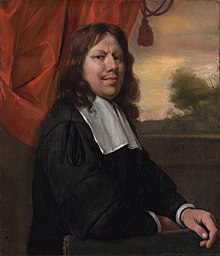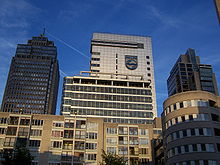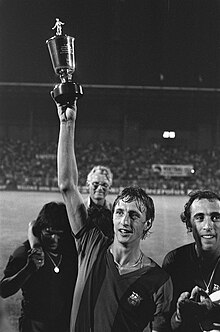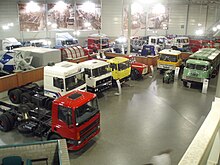This article lists some of the events that took place in the Netherlands in 2001.

Rotterdam is the second-largest city in the Netherlands after the national capital of Amsterdam. It is in the province of South Holland, part of the North Sea mouth of the Rhine–Meuse–Scheldt delta, via the "New Meuse" inland shipping channel, dug to connect to the Meuse at first and now to the Rhine.
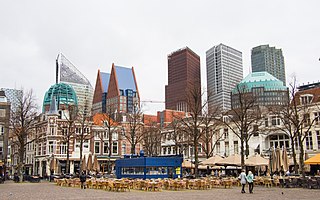
The Hague is the capital city of the South Holland province of the Netherlands. With a population of over half a million, it is the third-largest city in the Netherlands. Situated on the west coast facing the North Sea, The Hague is the country's administrative centre and its seat of government, and while the official capital of the Netherlands is Amsterdam, The Hague has been described as the country's de facto capital since the time of the Dutch Republic.

The Hague School is a group of artists who lived and worked in The Hague between 1860 and 1890. Their work was heavily influenced by the realist painters of the French Barbizon school. The painters of the Hague school generally made use of relatively somber colors, which is why the Hague School is sometimes called the Gray School.

De Bijenkorf is a chain of high-end department stores in the Netherlands, with its flagship store on Dam Square in Amsterdam. The chain is owned by Selfridges Group, owner also of Britain's Selfridges and Ireland's Brown Thomas and Arnotts.
This article lists some of the events that took place in the Netherlands in 2007.
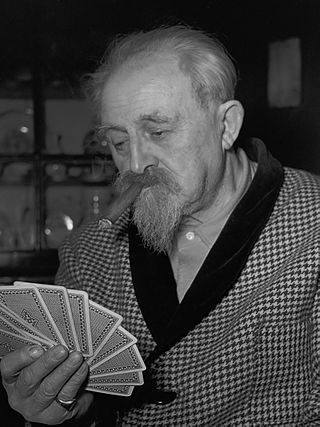
Johannes Carolus Bernardus (Jan) Sluijters, or Sluyters was a Dutch painter and co-founder of the Moderne Kunstkring.
Koreans in the Netherlands form one of the smaller Korean diaspora groups in Europe. As of 2022, 9,469 people of Korean origin lived in the Netherlands.

Jan Duiker was a Dutch architect. Partnership with Bernard Bijvoet from 1917 until 1935. For the commission of the Zonnestraal project the architects were recommended by Hendrik Berlage. Bijvoet's first wife Jacoba Ezerman was closely related to the'grand man' of Zonnestraal, Jan van Zutphen. Bijvoet left the Netherlands in 1925, where after some time, he started to work in Paris with Pierre Chareau for projects such as Maison de Verre et al. Meanwhile he continued to collaborate with Duiker and returned in 1945. Jan Duiker is one of the most important representatives of the Modern movement,'Het Nieuwe Bouwen'. He is buried at Zorgvlied cemetery.
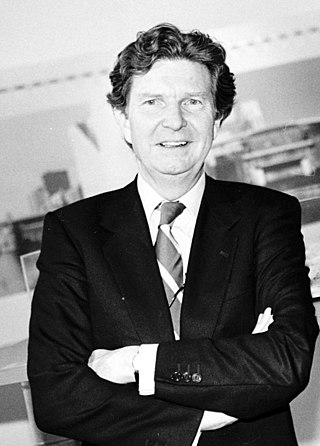
Hubert-Jan Henket is a Dutch architect. He is a specialist in the relations between old and new buildings, the redesign of buildings, renovation and restoration. He is the founder of DOCOMOMO international.
Benthem Crouwel Architects is a Dutch architectural firm founded in 1979 by Jan Benthem and Mels Crouwel. Today, partners Pascal Cornips, Daniel Jongtien, Saartje van der Made and Joost Vos lead an international team of 60 professionals at the Amsterdam based Benthem Crouwel LAB. They work on projects from Amsterdam, Paris and California.

Jan Hillebrand Wijsmuller was a Dutch painter. He belongs to The 2. Golden Age of Dutch Painting.

Henricus Petrus Cornelis (Kees) Verschuren is a Dutch sculptor, painter and former lecturer at the Willem de Kooning Academie in Rotterdam, known for his monumentalist sculptures in public places in the Netherlands.
Johannes Antonius van der Laan was a Dutch architect.

The 2021 Dutch curfew riots were a series of riots in the Netherlands that initiated as protests against the government's COVID-19 prevention measures and specifically the 21:00–4:30 curfew that was introduced on 23 January 2021. The police have described the riots as the worst in the country since the 1980 coronation riots.
This timeline is about events during World War II of direct significance to the Netherlands. For a larger perspective, see Timeline of World War II.


